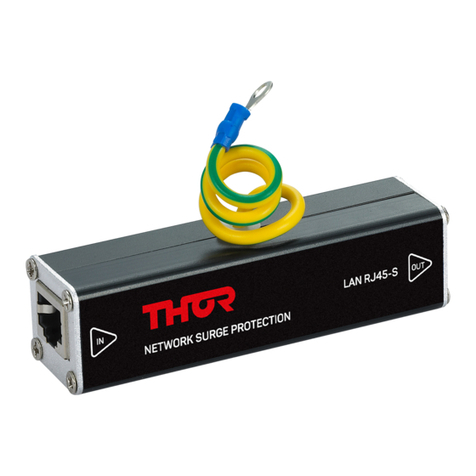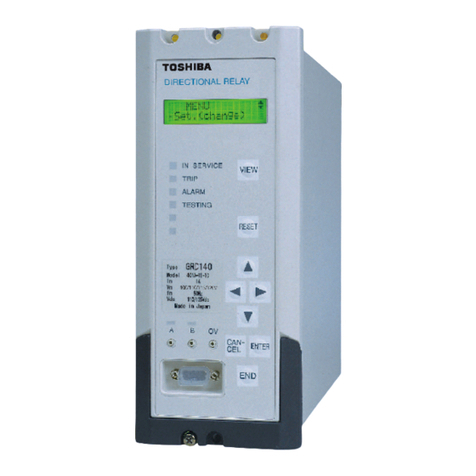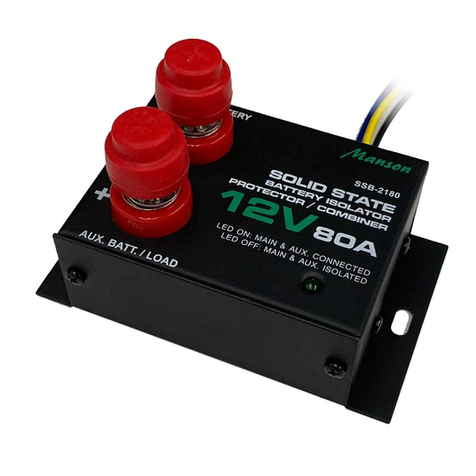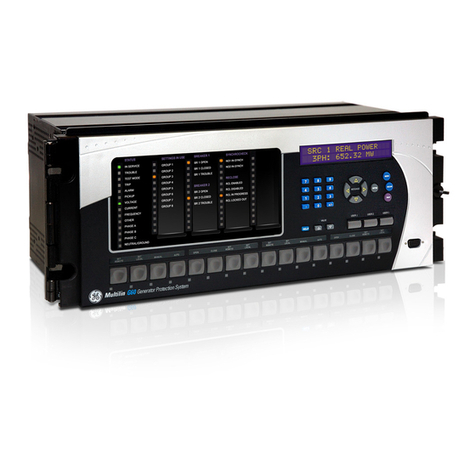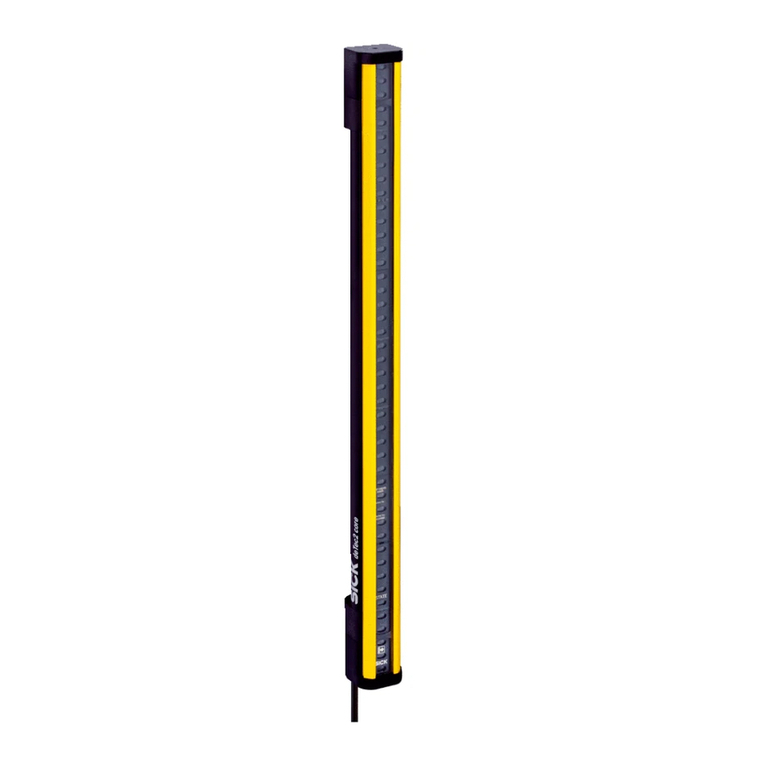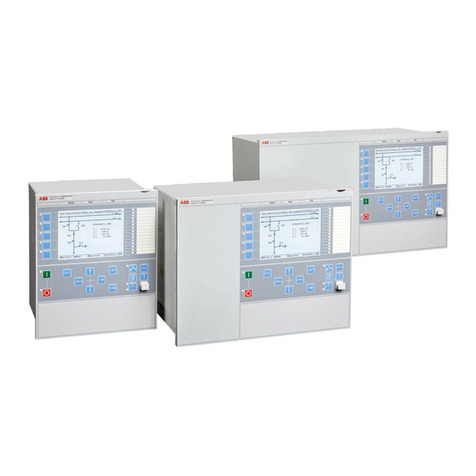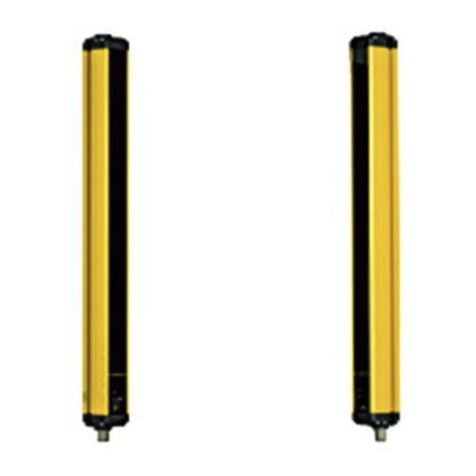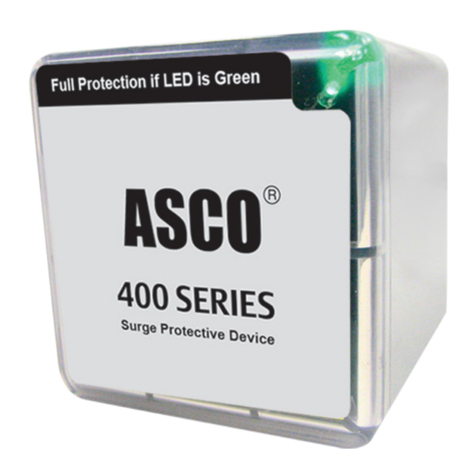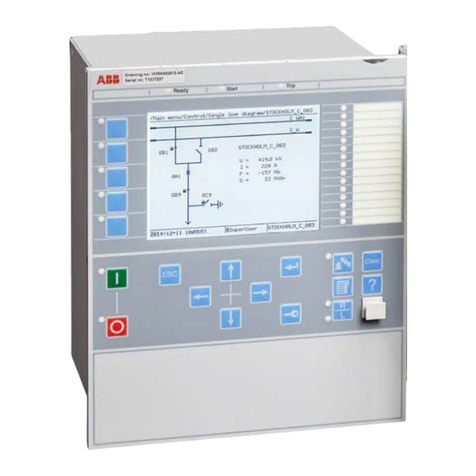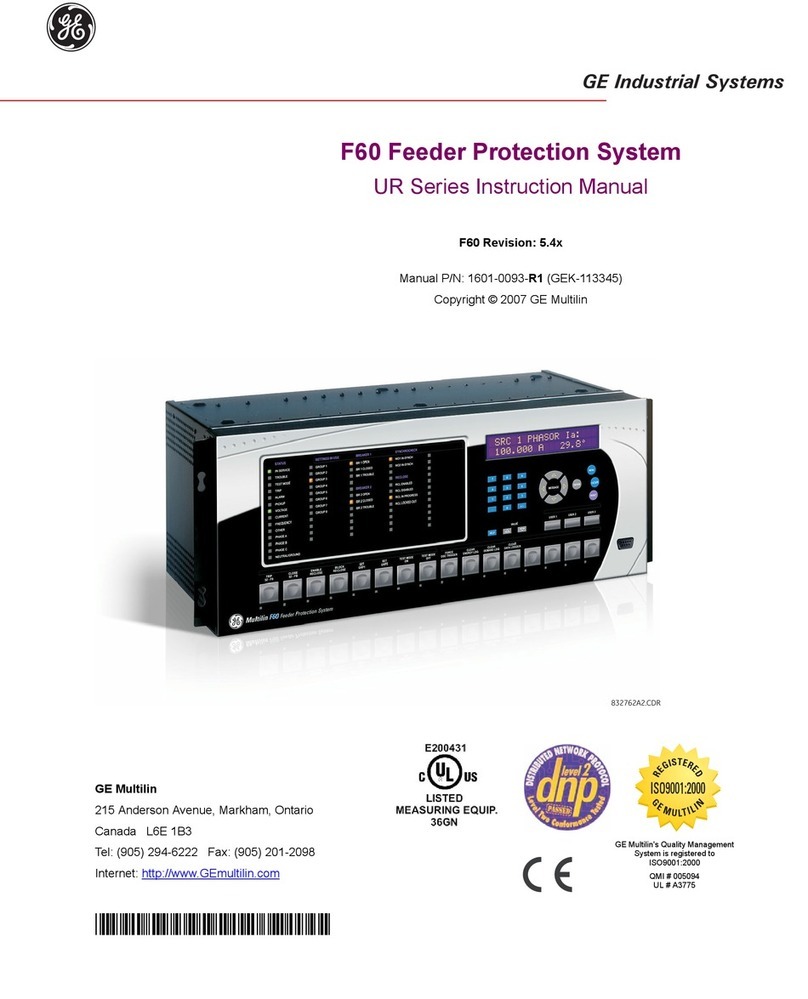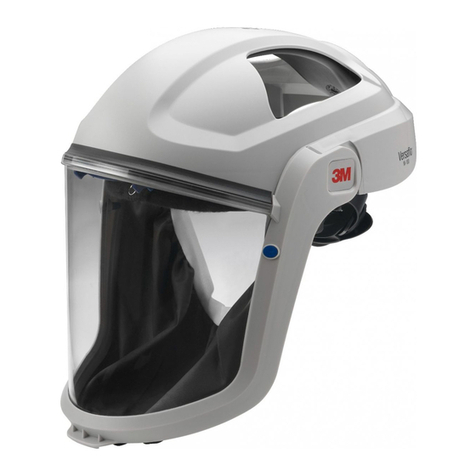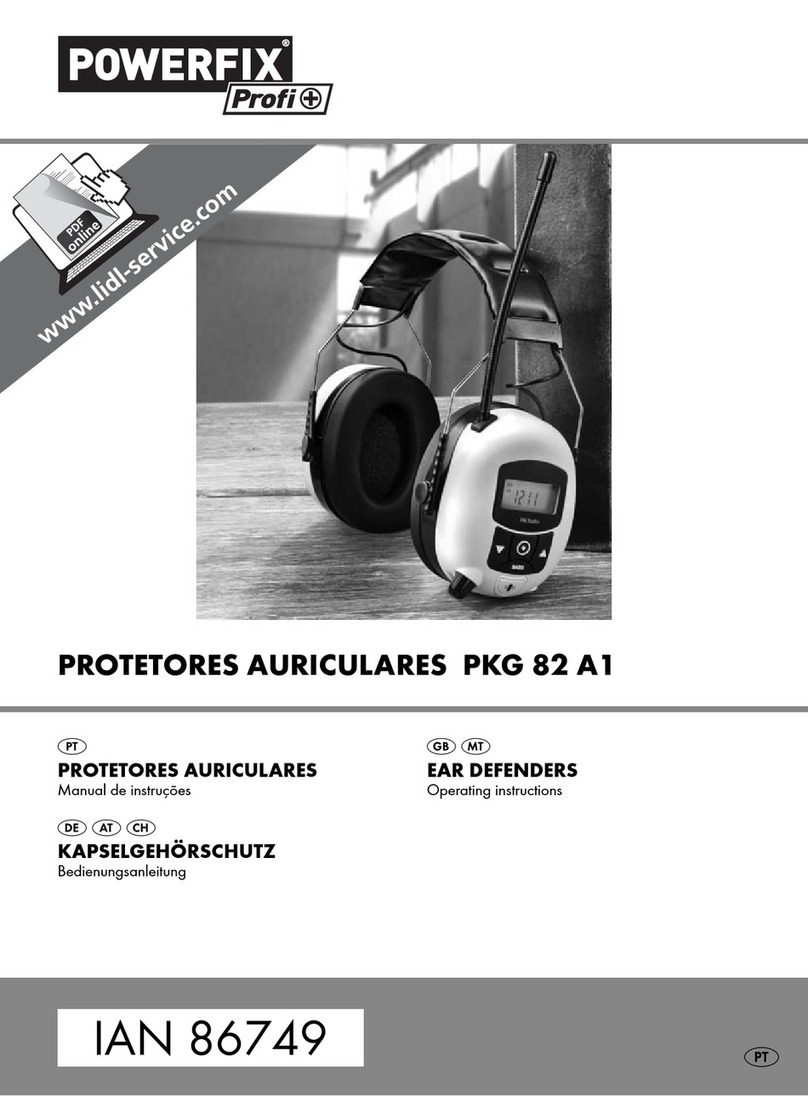FireFlex TOTALPAC X Installation guide

FM-076G-0-19A
Advanced Integrated Fire Protection System
TOTALPAC
®X
Owner's Operation
and
Maintenance Manual
WET PIPE SYSTEM

Page ii TOTALPAC ®X
Integrated Fire Protection System
OWNER'S OPERATION & MAINTENANCE MANUAL
FM-076G-0-19A
Copyright © 2021 FIREFLEX Systems Inc.
All Rights Reserved
Reproduction or use, without express written permission from FIREFLEX Systems Inc, of any portion of this manual is prohibited.
While all reasonable efforts have been taken in the preparation of this manual to assure its accuracy, FIREFLEX Systems Inc
assumes no liability resulting from any errors or omissions in this manual, or from the use of the information contained herein.
TOTALPAC ® is a registered trademark of FIREFLEX Systems Inc.
FIREFLEX Systems Inc. reserves the right to make changes to this manual and the data sheets herewith at any time, without prior
notification.

TOTALPAC ®X Page iii
Integrated Fire Protection System
OWNER'S OPERATION & MAINTENANCE MANUAL
FM-076G-0-19A
Table of Contents
Wet Pipe System
General Section .......................................................................................................... Section A
1- General description
2- Listings and approvals
3- Applicable standards
4- Environment
5- Features
6- Configuration description
7- System release
Mechanical Section ...................................................................................................................... Section B
1- Installation, operation & maintenance instructions
1.1 Installation
1.2 Preliminary inspection before placing the system in service
1.3 Placing the system in service
1.4 System operation
1.5 Emergency instructions
1.6 Placing the system back in service after operation
1.7 Inspections & tests
1.8 Maintenance
2- System trim
2.1 Normal condition
N/A ................................................................................................................................................. Section C
N/A ................................................................................................................................................. Section D
Control Section .............................................................................................................................Section E
1- Remotely supervised unit without control panel
1.1 Product description
1.2 Technical data
Electrical Section .......................................................................................................................... Section F
1- Remotely supervised configuration
Dimensional Data & Cabinet ....................................................................................................... Section G
1- Cabinet unit
Limited Warranty .......................................................................................................................... Section H

Page iv TOTALPAC ®X
Integrated Fire Protection System
OWNER'S OPERATION & MAINTENANCE MANUAL
FM-076G-0-19A
This page is left intentionally blank.

TOTALPAC®XPage 1of 2
Integrated Fire Protection System
A
General Section - Wet Pipe System
FM-076G-0-39A
1- General description
This TOTALPAC®Xintegrated fire protection system by
FIREFLEX Systems Inc. consists of a wet pipe system trim
totally pre-assembled, pre-wired and factory tested. All
electrical and mechanical components of the system are
contained in one single unit.
The only connections required for installation are the water
supply inlet, the water discharge outlet, the main drain and
the electrical supervisory and alarm connections. The
discharge outlet is connected to a fixed piping network.
Water is the extinguishing agent.
On system piping network, closed heat sensitive automatic
sprinklers are spaced and located in accordance with
recognized installation standards in order to detect a fire.
Only those sprinklers immediately over or near to fire
operate.
Wet pipe system uses automatic sprinklers on the system
piping network, which is filled with pressurized water. A
low water pressure gives a supervisory signal.
Wet pipe system is designed so the alarm check valve will
open when an important loss of water pressure from the
system piping network occurs. When the alarm check
valve opens, water will flow into the system piping network
and out of any open automatic sprinklers and other
opening on the system. The opening of the alarm check
valve gives an alarm signal.
Note: Every TOTALPAC®Xunit is identified with its unique
serial number. This number is located on an adhesive
label inside the main door panel and is used to maintain a
record in our computerized data base. Have this serial
number handy when calling for information on your unit
(format is TOTX####).
2- Listings and approvals
In addition to being fabricated under tight ISO-9001
manufacturing and quality control procedures, your
TOTALPAC®Xunit has also been tested and approved by
recognized laboratories.
WARNING Any unauthorized modification or addition made
on-site to a factory built Listed unit will void this Listing.
Such modifications or additions may void the unit's
warranty as well. Consult your nearest FIREFLEX Systems
authorized distributor before proceeding with such
modifications or additions.
3- Applicable standards
The TOTALPAC®Xcomplies with the following standards:
-NFPA-13 Sprinkler Systems
-NFPA-15 Water Spray Fixed Systems
-NFPA-72 Fire Alarm Systems
Before installation, the contractor installing the unit shall
also be familiar with the following documents and
standards:
- Applicable Local & State Building Codes
- Any additional requirements of the Local Authority Having
Jurisdiction
4- Environment
TOTALPAC®Xunit can be installed in none heated or in a
corrosive atmosphere area, depending on the selected
cabinet (see section GCABINET SECTION). Refer to
section ECONTROL SECTION for environment data.
The unit and its components must be kept free of foreign
matter, contaminated water supplies, and any condition
that could impair its operation or damage the components.
The frequency of the inspections and maintenance will
vary depending on these environmental conditions as well
as the condition of the air supply to the system. The owner
is responsible for maintaining the fire protection system
and devices in proper operating condition. Refer to
section BMECHANICAL SECTION for maintenance
instructions.

Page 2of 2TOTALPAC®X
A
Integrated Fire Protection System
General Section - Wet Pipe System
FM-076G-0-39A
5- Features
The TOTALPAC®Xunit is superior to many other products
which are actually available on the fire protection market.
It is manufactured by FIREFLEX Systems Inc. which has
developed and introduced the concept of integrated fire
protection systems.
Main features are:
Trouble free design for safe and easy application
Available in 3 sizes from 3" (80 mm) to 6" (150mm)
diameter
Uses the Viking alarm check valve
Compact, aesthetic and easy to move
User-friendly standardized owner's manual with every
unit
Unique serial number on every unit
Uses only c-UL-us Listed and FM Approved components
Designed in accordance with NFPA Standards
Trim is fully assembled and tested at the factory
All trims are galvanized steel, Listed and Approved for
250 PSI (1724 kPa) service maximum
Quick connections to water supply and drain at the
bottom, and sprinkler riser on top of unit, all with grooved
end fittings
Sturdy 14 gauge steel cabinet, painted fire red with oven
baked polyester powder on phosphate base
Textured rust proof finish
Neoprene gasket on all doors
Key-alike locks on all cabinet doors
Manufactured under ISO-9001 quality control procedures
6- Configuration description
TOTALPAC®Xwet pipe system is built around the Viking
trim using alarm check valve model J-1.
The valve is rated up to a maximum of 250 PSI WWP
(1724 kPa) and is available in the following diameters:
3" (80 mm) 6" (150 mm)
4" (100 mm)
TOTALPAC®Xwet pipe system is supplied with groove/
groove alarm check valve.
6.1 Wet pipe system
The system piping network is pressurized with water.The
wet pipe system uses the Viking alarm check valve which
open by the fusing of an automatic sprinkler in the system
piping network.
The water pressure of the system piping network above
the alarm check valve is equal or greater than the inlet
pressure beneath the alarm check valve, which maintain
the alarm check valve closed.
In fire condition, when an automatic sprinkler fuses on the
system piping network, it release the pressure above the
alarm check valve, causing the alarm check valve to open.
Water will flow from the wet pipe system through opened
sprinklers.
6.1.1 Wet pipe system with excess pressure pump
An excess pressure pump (1/3 or 1/2 HP) ensures that the
system piping network pressure above the alarm valve is
greater than the inlet pressure beneath the alarm valve.
6.1.2 Wet pipe system with retard chamber
The Viking retard chamber model C-1 reduces the
possibility of false alarms due to changes in water
pressure.

TOTALPAC®XPage 1of 8
Integrated Fire Protection System
B
Mechanical Section - Wet Pipe System
FM-076G-0-59A
1- Installation, operation & maintenance
instructions
Note: Numbers indicated between brackets refer to
figures 1 and 2 DETAILED SYSTEM TRIM SCHEMATICS.
1.1 Installation
1. Conform to local municipal or other codes regarding
installations of fire protection systems.
2. Install the TOTALPAC®Xunit and connect the system
according to instruction manual and technical data
supplied.
IMPORTANT ! The cabinet must be firmly anchored to the
floor using all four (4) anchoring holes (see section G
CABINET).
Note: The drain collector shall be connected to an open
drain. Do not restrict or reduce drain piping.
3. Install the system piping network in accordance with
applicable standards.
4. Connect all supervisory and alarm signals according to
electrical schematics (see section FELECTRICAL).
Note: Electrical conduit connectors shall be NEMA-4 type.
5. If applicable, connect the AC power to the excess
pressure pump (B14) on a separate breaker in the
electric distribution panel (see section FELECTRICAL).
Notes :
AC power connections must be made by a qualified
installer according to national standards and equipment
specifications.
Do not apply AC power to the excess pressure pump yet.
6. Perform preliminary inspection prior to put system in
service (see paragraph 1.2 of the current section).
7. Place the system in service (see paragraph 1.3of the
current section).
8. Perform the annual inspection sequence (see
paragraph 1.8 of the current section).
9. If the system does not operate as it should, make the
necessary corrections according to manuals issued or
consult your distributor or FIREFLEX Systems Inc.
10. Make sure that building owner or a delegated
representative has received instructions regarding the
operation of the system.
WARNING ! TOTALPAC®Xunit must be installed in an area
not subject to freezing temperatures or physical damage.
1.2 Preliminary inspection before placing the system in
service
1. Open door to mechanical section.
a) Main water supply valve (D1) must be CLOSED.
b) Main drain valve (D3) must be CLOSED.
c) Alarm test valve (B5) must be CLOSED.Hydraulic
alarm cut-off valve (C3)must be OPEN.
d) If applicable, excess pressure pump isolation
valves (B7) are both OPEN.
e) Gauges (B12 and B13) should show 0 PSI (0 kPa).
2. Perform hydrostatic test as per NFPA-13 requirements.
3. Correct leaks if any before completing test.
4. OPEN main drain valve (D3) to completely drain the
system piping network.
Note :When a valve has been removed from service and is
subject to freezing or will be out of service for an extended
period of time, all water must be removed from the system,
trim piping, water supply piping and any other trapped
areas.
5. If applicable, apply AC power to the excess pressure
pump (B14).
6. Adjust excess pressure pump pressure switch (B10) as
per paragraph 2.1.4a.
7. Adjust high/low water pressure switch (B11) as per
paragraph 2.1.4b,c.

Page 2of 8TOTALPAC®X
B
Integrated Fire Protection System
Mechanical Section - Wet Pipe System
FM-076G-0-59A
1.3Placing the system in service
1. Verify that the main water supply valve (D1) is CLOSED
and that the system is free of leaks. CLOSE main drain
valve (D3).
2. OPEN the inspector's test valve and all auxiliary vents to
allow air to escape from the system while it is filling with
water.
Note :For proper operation of the wet pipe system and to
minimize unwanted (false) alarms, it is important to
remove trapped air from the system when filling it with
water. Air trapped in the system may also cause
intermittent operation of the water motor alarm during
sustained flow of water (such as the flow required by an
open sprinkler or the system test valve). Consider
installation of auxiliary vents to facilitate venting.
3. If desired, CLOSE the hydraulic alarm cut-off valve (B6)
to prevent local alarms from operating while filling the
system.
4. Slowly OPEN the main water supply valve (D1).
5. Allow the system to be completely fill with water. Allow
water to flow from the system test valve, and from any
other open vents provided, until all air is exhausted from
the system.
6. After all air is exhausted from the system, CLOSE the
inspector test valve and all other open vents.
7. If installed, the excess pressure pump (B14) should
stop.
8. The pressure gauge (B13) on the system side of the
alarm check valve (A1) should indicate water pressure
equal or greater than the pressure gauge (B12) located
on the supply side of the alarm check valve.
9. OPEN the hydraulic alarm cut-off valve (B6) and verify
that all other valves are secured in their normal
operating position (see paragraph 2.1 NORMAL
CONDITION of the current section).
10.Notify the AUTHORITY HAVING JURISDICTION, remote
station alarm monitors, and those in the affected area
that the system is in service.
Note: For additional information describing individual
components of the specific Viking wet pipe system, refer to
current Viking technical data, available on Viking web site.
Also refer to applicable installation standards, codes and
Authorities Having Jurisdiction.
1.4System Operation
1.4.1 In the SET condition
In the normal SET condition, the system piping is filled with
water. The water pressure is kept equal or higher on the
system side of the alarm check valve (A1) than on the
water supply side.
If applicable, the excess pressure pump (B14) maintains
higher pressure on the system side.
1.4.2 In a fire condition
When an automatic sprinkler fuses on the system piping
network, it allows the water to flow. The alarm check
valve (A1) opens by the flow of water allowing pressurized
water to enter the alarm port to activate the alarm
devices (C1 and optional C2 and C3).
Sprinkling continues until the main water supply valve (D1)
is manually closed.
1.4.3 Supervisory condition
Intermittent alarms
Bleed air from the high points of the system. If the system
pressure is seldom, if ever, greater than supply pressure,
drain the system and check valve rubber and by-pass
check valve rubber for cold flow and sealing efficiency.
Clean valve seats and replace rubbers as necessary.
False alarms
If water pressure surges produce false alarms check the
following:
a) Air trapped in the system piping network can cause
false alarms, alarms to cycle on and off during testing
and other nuisance problems. To fix this problem,
bleed as much air as possible from the trapped high
points of system piping. This condition can be
minimized by opening the remote inspectors test
valve and slowly filling the system with water when
placing the system in service.
b) Clean drain restriction on retarding chamber trim.
c) Clean or replace check valve on external by-pass
trim.
d) Clean or replace alarm valve clapper rubber.

TOTALPAC®XPage 3of 8
Integrated Fire Protection System
B
Mechanical Section - Wet Pipe System
FM-076G-0-59A
1.5 Emergency instructions
To take system out of service
WARNING ! Placing a control valve or detection system out
of service may eliminate the fire protection capabilities of
the system. Prior to proceeding, notify all local
AUTHORITIES HAVING JURISDICTION. Consideration should
be given to employ a fire patrol in the affected areas.
After a fire, verify that the fire is OUT and that placing the
system out of service has been authorized by the
appropriate local AUTHORITY HAVING JURISDICTION.
Sprinklers piping that have been subjected to a fire must
be returned to service as soon as possible. The entire
system must be inspected for damage, and repaired or
replaced as necessary.
1. CLOSE main water supply valve (D1).
Note: Electric alarms controlled by a pressure switch
installed at the ¾"-NPT (20mm) connection (C3)for a non-
interruptible alarm signal cannot be shut-off until the alarm
check valve (A1) is reset or taken out of service.
2. OPEN main drain valve (D3) and inspector's test valve.
3. If applicable, CLOSE both excess pressure pump
isolation valves (B7).
4. Replace any automatic sprinkler that have opened,
been damaged or exposed to fire conditions.
5. Return the system to service as soon as possible (see
paragraph 1.6PLACING THE SYSTEM IN SERVICE of the
current section).
6. Perform all recommended maintenance procedures
(see paragraph 1.8MAINTENANCE in the current section).
Note: When a system has been removed from service and
is subject to freezing or will be out of service for an
extended period of time, all water must be removed from
the priming chamber, trim piping, water supply piping and
any other trapped areas.
1.6 Placing the system back in service after operation
1. Verify that the system has been properly drained. Verify
that all automatic sprinklers are set and system piping
auxiliary drain valves are CLOSED.
2. Verify that the main water supply valve (D1) is CLOSED.
CLOSE main drain valve (D3).
3. Verify that the inspector's test valve and all auxiliary
vents are OPEN to allow air to escape from the system
while it is filling with water.
4. CLOSE the hydraulic alarm cut-off valve (B6) to prevent
local alarms from operating while filling the system.
Note: Electric alarms controlled by a pressure switch
installed at the ¾"-NPT (20mm) connection (C3)can only
be shut-off by the hydraulic alarm cut-off valve (B6) or until
the alarm check valve (A1) is reset or taken out of service.
5. Slowly OPEN the main water supply valve (D1).
6. Allow the system piping network to be completely fill
with water. Allow water to flow from the inspector's test
valve, and from any other open vents provided, until all
air is exhausted from the system.
7. After all air is exhausted from the system, CLOSE the
inspector's test valve and all other open vents.
8. The pressure gauge (B13) on the system side of the
alarm check valve (A1) should indicate water pressure
equal or greater than the pressure gauge (B12) located
on the supply side of the alarm check valve.
9. If applicable, OPEN both excess pressure pump isolation
valves (B7).
10. OPEN the hydraulic alarm cut-off valve (B6) and verify
that all other valves are secured in their normal
operating position (see paragraph 2.1 NORMAL
CONDITION of the current section).
11. Notify the AUTHORITY HAVING JURISDICTION, remote
station alarm monitors, and those in the affected area
that the system is in service.

Page 4of 8TOTALPAC®X
B
Integrated Fire Protection System
Mechanical Section - Wet Pipe System
FM-076G-0-59A
1.7 Inspections and tests
NOTICE : The owner is responsible for maintaining the fire
protection system and devices in proper operating
condition.
It is imperative that the system be inspected and tested on
a regular basis in accordance with NFPA-25. Refer to
Inspections and Tests recommended in Viking technical
data describing individual components of the wet pipe
system used.
The frequency of the inspections may vary due to
contaminated or corrosive water supply, corrosive
atmospheres, as well as the condition of the air supply to
the system. For minimum maintenance and inspection
requirements, refer to NFPA-25. In addition, the
AUTHORITY HAVING JURISDICTION may have additional
maintenance, testing, and inspection requirements that
must be followed.
WARNING ! Any system maintenance that involves placing
a control valve or detection system out of service may
eliminate the fire protection capabilities of that system.
Prior to proceeding any testing, notify all local AUTHORITIES
HAVING JURISDICTION. Consideration should be given to
employment of a fire patrol in the affected areas.
1.7.1 Riser flow test
Performance of a riser flow test is recommended annually
during warm weather.
1. Fully open the Inspectors test valve to simulate the
operation of an automatic sprinkler.
2. Alarm pressure switch (C1) should operate. Water
should flow from the inspector's test valve.
3. Close the inspectors test valve.
4. When testing is complete, return the system to service
(see paragraph 1.6PLACING THE SYSTEM IN SERVICE of
the current section).
1.8 Maintenance
NOTICE: The owner is responsible for maintaining the fire
protection system and devices in proper operating
condition.
The system shall be maintained in full operation condition
at all times.
All troubles or impairments shall be corrected promptly
consistent with the hazard being protected.
Refer to MAINTENANCE INSTRUCTIONS provided in Viking
Technical Data describing individual components of the
system used.
The following requirements are based upon NFPA-25.
Records
Records of inspections, tests and maintenance of the
system and its components shall be made available to the
AUTHORITY HAVING JURISDICTION upon request. Typical
records include, but are not limited to: valves inspection;
flow, drain, and pump tests, and trip test of the alarm check
valve.
Acceptance test records should be retained for the life of
the system or its special components. Subsequent test
records should be retained for a period of one (1) year
after the next test. The comparison determines
deterioration of system performance or condition and the
need for further testing or maintenance.
1.8.1 Monthly
1. Inspection of gauges (water supply (B12) and system
pressure (B13) ) to ensure good condition and normal
water supply pressure.
2. Alarm check valve shall be externally inspected. The
valve inspection shall verify the following:
a) The gauges indicate that normal supply water
pressure is being maintained.
b) The valve is free of physical damage.
c) All valves are in the appropriate open or closed
position (see paragraph 2.1 of the current section).
d) If applicable, there is no leakage from the retard
chamber or alarm drains.

TOTALPAC®XPage 5of 8
Integrated Fire Protection System
B
Mechanical Section - Wet Pipe System
FM-076G-0-59A
1.8.2 Quarterly
1. Check alarm pressure switch (C1)and optional water
motor gong (C2)by opening the alarm test valve (B5).
2. Conduct riser flow test for change in water supply or
valve position (see paragraph 1.7.1 of the current
section).
Test procedure
a) Fully OPEN the main drain valve (D3).
b) Record residual pressure.
c) Slowly CLOSE the main drain valve (D3).
d) Record the time taken for supply water pressure to
return to the original pressure.
1.8.3 Semi-annually
1. Main water supply valve (D1) switch shall be operated
to verify the switch actuation upon movement of the
hand wheel.
2. Check alarm pressure switch (C1 and optional C3)and
optional water motor gong (C2)by opening the alarm
test valve (B5).
3. Perform functional test of all components of the system.
1.8.4 Annually
1. Perform riser flow test (see paragraph 1.7.2 of the
current section).
2. Record indicating the date of the last trip, tripping time
and name of the organization conducting the test shall
be maintained at a location available for review by the
AUTHORITY HAVING JURISDICTION.
1.8.5 Every 5 years
1. Test on gauge (gauge precision required: less than 3%
of the full scale).
2. Perform test on control valve operation.
3. Alarm check valve (A1) and their associated strainers,
filters and restriction orifices shall be inspected
internally.
2- Wet pipe system
Note: Numbers indicated between brackets refer to figure 1
DETAILED SYSTEM TRIM SCHEMATICS from this section and
section DAIR SUPPLY.
2.1 Normal condition
1. Valves
a) Main water supply valve (D1) is OPEN.
b) All upstream water supply valves are OPEN.
c) Main drain valve (D3) is CLOSED.
d) Alarm test valve (B5) is CLOSED.
e) Hydraulic alarm cut-off valve (B6) is OPEN.
f) If applicable, excess pressure pump isolation
valves (B7) are both OPEN.
g) All gauge valves are OPEN.
2. Gauges
a) Water supply pressure (B12) shall be at water supply
pressure.
b) System piping network (B13) shall be equal to, or
higher than, water supply pressure (B12).
3. Pressure switches & settings (factory set)
a) Alarm pressure switch (C1) should activate when
pressurized higher than 5 PSI (34 kPa).
4. Pressure switches & settings for excess pressure pump
(factory set)
a) Excess pressure pump pressure switch (B10) - 15 to
25 PSI (103 to 172 kPa) above the water supply
pressure (B12).
b) Low water pressure switch (B11) should activate
when pressurized 10 PSI (69 kPa) lower than the
system water pressure (B13).
c) High water pressure switch (B11) should activate
when pressurized 10 PSI (69 kPa) above the system
water pressure (B13) (175 PSI (1207 kPa) max).

Page 6 of 8 TOTALPAC ®X
B
Integrated Fire Protection System
Mechanical Section - Wet Pipe System
FM-076G-0-59A
Figure 1 - Detailed system trim schematic for wet pipe system with excess pressure pump
Typical wet pipe system with excess pressure pump (4" (100 mm) system shown)
B6
C2
TOTALPAC X Base
(shown without enclosure)
B9
FM-061H-0-377A
FIELD CONNECTION
TO OPEN DRAIN
(bottom entry)
FIELD CONNECTION
TO WATER SUPPLY
(bottom entry)
FIELD CONNECTION TO
SPRINKLER PIPING NETWORK
C1
B7 B15
D1
B10
B11
B14
B7 B8
B13
B12
C3
D3
A1
B5 B3
Trim components
A1 Alarm check valve
B3 7/32" (5.6 mm) Restricted orifice
B5 Alarm test valve (N.C.)
B6 Hydraulic alarm cut-off valve (N.O.)
B7 Excess pressure pump isolation valves (N.O.)
B8 ¼"-NPT (8 mm) Relief valve
B9 ½"-NPT (15 mm) Swing check valve
B10 Excess pressure pump pressure switch
B11 Water pressure supervisory switch (PS120-2)
B12 Water supply pressure gauge & valve (N.O.)
B13 System water pressure gauge & valve (N.O.)
B14 Excess pressure pump
B15 1/8" (3.6 mm) Restricted orifice
C1 Alarm pressure switch (PS10-1)
C2 ¾"-NPT (20 mm) connection to optional water motor
gong (strainer to be supplied by contractor)
C3 Connection to optional electric alarm switch
D1 Main water supply valve (N.O.)
D3 Main drain valve (N.C.)

TOTALPAC ®X Page 7 of 8
Integrated Fire Protection System B
Mechanical Section - Wet Pipe System
FM-076G-0-59A
Figure 2 - Detailed system trim schematic for wet pipe system with retard chamber
Typical wet pipe system with retard chamber (4" (100 mm) system shown)
B14
B6
C2
TOTALPAC X Base
(shown without enclosure)
B4
B13
B12
C3
D3
A1
B5 B7
FM-061H-0-378A
FIELD CONNECTION
TO OPEN DRAIN
(bottom entry)
FIELD CONNECTION
TO WATER SUPPLY
(bottom entry)
FIELD CONNECTION TO
SPRINKLER PIPING NETWORK
C1
B3
B15
D1
Trim components
A1 Alarm check valve
B3 3/8" (9.5 mm) Restricted orifice
B4 Spring loaded check valve
B5 Alarm test valve (N.C.)
B6 Hydraulic alarm cut-off valve (N.O.)
B7 7/32" (5.6 mm) Restricted orifice
B12 Water supply pressure gauge & valve (N.O.)
B13 System water pressure gauge & valve (N.O.)
B14 Retard chamber
B15 1/8" (3.2 mm) Restricted orifice
C1 Alarm pressure switch (PS10-1)
C2 ¾"-NPT (20 mm) connection to optional water motor
gong (strainer to be supplied by contractor)
C3 Connection to optional electric alarm switch
D1 Main water supply valve (N.O.)
D3 Main drain valve (N.C.)

Page 8of 8TOTALPAC®X
B
Integrated Fire Protection System
Mechanical Section - Wet Pipe System
FM-076G-0-59A
This page is left intentionally blank.

TOTALPAC ®X Page 1 of 4
Integrated Fire Protection System E
Control Section
FM-076G-0-106A
1. Remotely supervised unit without control
panel
1.1 Product description
The TOTALPAC ®X wet pipe unit is provided without control
panel. A field wiring electrical junctions box is integrated
with the cabinet for connection of pressure switches,
supervisory switches, etc. in the trim is factory wired to a
terminal strip (TBA & TBC) for contractor's field wiring (see
figures 3 and 4 and the section F ELECTRICAL SECTION).
1.2 Technical data
Steel enclosure: Refer to section G CABINET SECTION for
further details.
Environment (electrical section): 39°F (4°C) minimum.
AC Power
The TOTALPAC ®X unit may be provided with optional light,
heater and/or excess pressure pump. Refer to section F
ELECTRICAL SECTION for contractor's field wiring to terminal
strip (TBB) to determine applicable power requirements.
Figure 1 - Typical wet pipe system layout with excess pressure pump
Excess Pressure Pump
Excess Pressure Pump
Isolation Switch
Optional Light & Door Switch
Typical Wet Pipe Trim
Drain Outlet
Water Inlet
Junctions Box
TBA, TBB & TBC
Door Lock (4)
FM-06HA-0-280A

Page 2 of 4 TOTALPAC ®X
E
Integrated Fire Protection System
Control Section
FM-076G-0-106A
Figure 2 - Typical wet pipe system layout with retard chamber
Retard Chamber
Optional Light & Door Switch
Typical Wet Pipe Trim
Drain Outlet
Water Inlet
Junctions Box
TBA, TBB & TBC
Door Lock (4)
FM-06HA-0-280A

TOTALPAC ®X Page 3 of 4
Integrated Fire Protection System E
Control Section
FM-076G-0-106A
Figure 3 - Junctions box layout for wet pipe system with excess pressure pump, without control panel
TBB Terminals
TBB
FM-061H-0-361A
AC POWER
120VAC, 60Hz or
220/240VAC, 50/60Hz
SYSTEM DEVICES
TBA & Optional TBC Terminals
POWER LIMITED CIRCUITS
F
NOTE : Junction box is shown with cover removed.
OPT.
Excess Pressure Pump
Isolating Switch (E15)
All conduits are installed
by the Contractor
TBC
Refer to Electrical Section
for Wiring Diagrams.
TBA

Page 4 of 4 TOTALPAC ®X
E
Integrated Fire Protection System
Control Section
FM-076G-0-106A
Figure 4 - Junctions box layout for wet pipe system with retard chamber, without control panel
SYSTEM DEVICES
FM-061H-0-360A
AC POWER
115VAC, 60Hz or
230VAC, 50/60Hz
F
NOTE : Junction box is shown with cover removed.
TBB Terminals
TBB
OPT.
All conduits are installed
by the Contractor
TBC
Refer to Electrical Section
for Wiring Diagrams.
TBA
TBA & Optional TBC Terminals
POWER LIMITED CIRCUITS

TOTALPAC ®X Page 1 of 2
Integrated Fire Protection System F
Electrical Section - Wet Pipe System
FM-076G-0-100A
1. Remotely supervised configuration for wet
pipe system with excess pressure pump
This TOTALPAC ®X unit has been provided without an
integrated control panel since all internal supervisory
devices are to be connected and supervised from a remote
Listed fire alarm control panel.
The remote alarm control panel is to be wired to the
contractor wiring junction box and terminals provided
(TBA, TBB & optional TBC) as shown in figure 1, and be
compatible with supervisory and alarm system contact
devices.
Note : No connection should be made directly in the trim
components as this would void warranty and might prevent
the normal operation of the unit.
Make sure the system will perform as required and is
tested to confirm it meets all requirements, as described in
section B MECHANICAL SECTION.
Figure 1 –Field wiring diagrams for wet pipe system with excess pressure pump
LOW WATER
PRESSURE SWITCH
LOW WATER PRESSURE
SUPERVISORY
EOL
MAIN VALVE
SUPERVISORY SWITCH
MAIN VALVE
SUPERVISORY
LOW TEMPERATURE
SENSOR LOW TEMPERATURE
EOL devices (not included) must be compatible with the Release Control Panel used.
HEATER OPTION
All devices are factory wired.
17
18
19
20
120VAC, 60Hz, 1/2HP MAX
2
3
4
5
6
7
8
9
10
11
12
13
14
15
16
WATER FLOW
ALARM
All devices are shown in their normal supervisory state.
NOTES:
Use dry contacts with power limited circuits only.
Contacts are rated:
Pressure switches: 2A, 30VDC 10A, 125/250VAC
Supervisory switches: 0.5A, 125VDC 0.25A, 250VDC 5A, 1/6HP, 125/250VAC
WATER FLOW
PRESURE SWITCH
1
TBC
2
3
C
NO
NC
MAIN VALVE
SUPERVISORY
Contacts provided for connection to the building's central Fire Alarm Panel.
LOS ANGELES OPTION
CHICAGO OPTION
NOTE:
MAIN VALVE
SUPERVISORY SWITCH
EOL
EOL
EOL
FM-061H-0-371A
1
TBA
1
2
3
4
TBB
LINE
NEUTRAL
GROUND
WIRING OF AC POWER SOURCE
Refer to Local Electrical Codes for wiring size.
HEATING AND
OR LIGHTING
5
6
GROUND
NEUTRAL
LINE
115VAC, 60Hz
400W MAX
230VAC, 50/60Hz
400W MAX
EXCESS
PRESSURE PUMP
HIGH WATER
PRESSURE SWITCH
HIGH WATER PRESSURE
SUPERVISORY
EOL

Page 2 of 2 TOTALPAC ®X
F
Integrated Fire Protection System
Electrical Section - Wet Pipe System
FM-076G-0-100A
2. Remotely supervised configuration for wet
pipe system with retard chamber
This TOTALPAC ®X unit has been provided without an
integrated control panel since all internal supervisory
devices are to be connected and supervised from a remote
Listed fire alarm control panel.
The remote alarm control panel is to be wired to the
contractor wiring junction box and terminals provided
(TBA, TBB & optional TBC) as shown in figure 1, and be
compatible with supervisory and alarm system contact
devices.
Note : No connection should be made directly in the trim
components as this would void warranty and might prevent
the normal operation of the unit.
Make sure the system will perform as required and is
tested to confirm it meets all requirements, as described in
section B MECHANICAL SECTION.
Figure 2 –Field wiring diagrams for wet pipe system with retard chamber
MAIN VALVE
SUPERVISORY
LOW TEMPERATURE
SENSOR LOW TEMPERATURE
EOL devices (not included) must be compatible with the Release Control Panel used.
HEATER OPTION
All devices are factory wired.
1
TBC
2
3
C
NO
NC
MAIN VALVE
SUPERVISORY
Contacts provided for connection to the building's central Fire Alarm Panel.
LOS ANGELES OPTION
CHICAGO OPTION
NOTE:
MAIN VALVE
SUPERVISORY SWITCH
1
2
3
4
TBB
LINE
NEUTRAL
GROUND
WIRING OF AC POWER SOURCE
Refer to Local Electrical Codes for wiring size.
HEATING AND
OR LIGHTING
5
6
115VAC, 60Hz
400W MAX
230VAC, 50/60Hz
400W MAX
EOL
EOL
All devices are shown in their normal supervisory state.
NOTES:
Use dry contacts with power limited circuits only.
Contacts are rated:
Pressure switches: 2A, 30VDC 10A, 125/250VAC
Supervisory switches: 0.5A, 125VDC 0.25A, 250VDC 5A, 1/6HP, 125/250VAC
WATER FLOW
PRESURE SWITCH
EOL
MAIN VALVE
SUPERVISORY SWITCH
FM-061H-0-372A
1
TBA
2
3
4
5
6
7
8
9
10
11
12
WATER FLOW
ALARM
Other manuals for TOTALPAC X
3
Table of contents
Other FireFlex Protection Device manuals

FireFlex
FireFlex TOTALPAC2 User manual
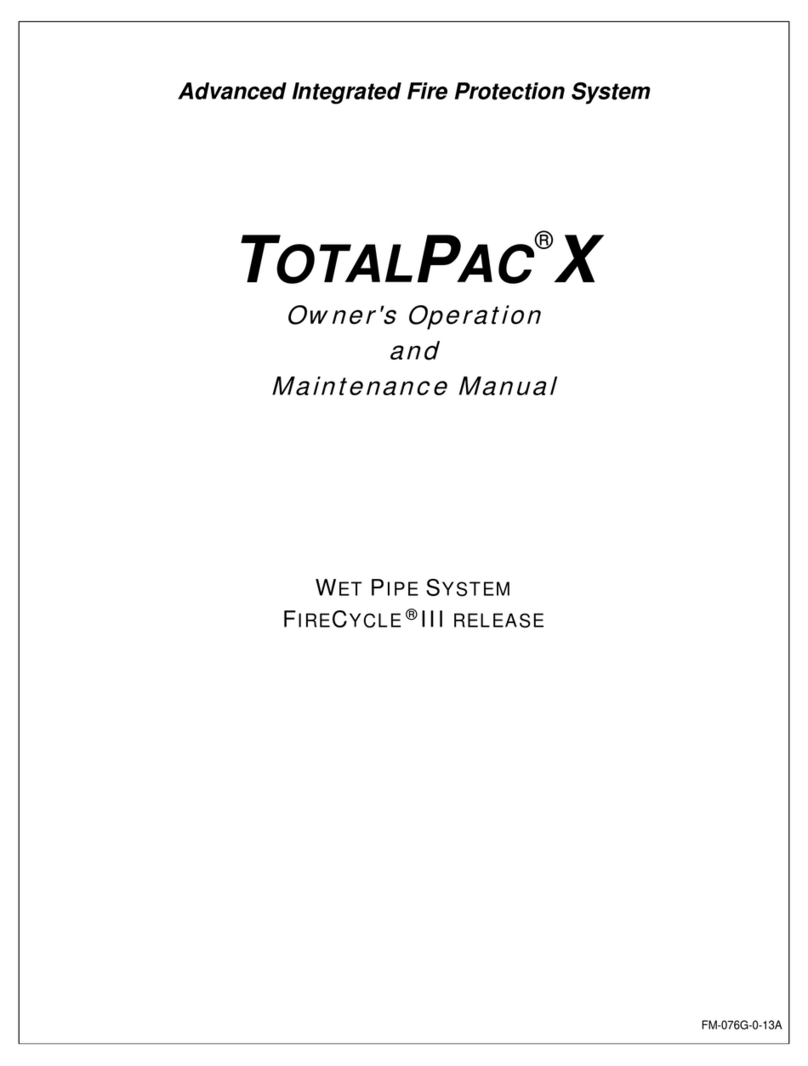
FireFlex
FireFlex TOTALPAC X Installation guide
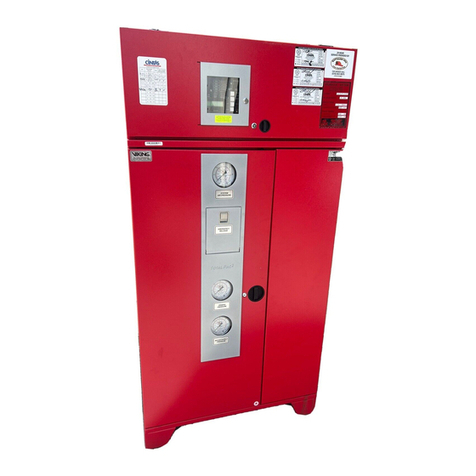
FireFlex
FireFlex TOTALPAC2 Manual

FireFlex
FireFlex TOTALPAC N2 Installation guide

FireFlex
FireFlex TOTALPAC X Installation guide
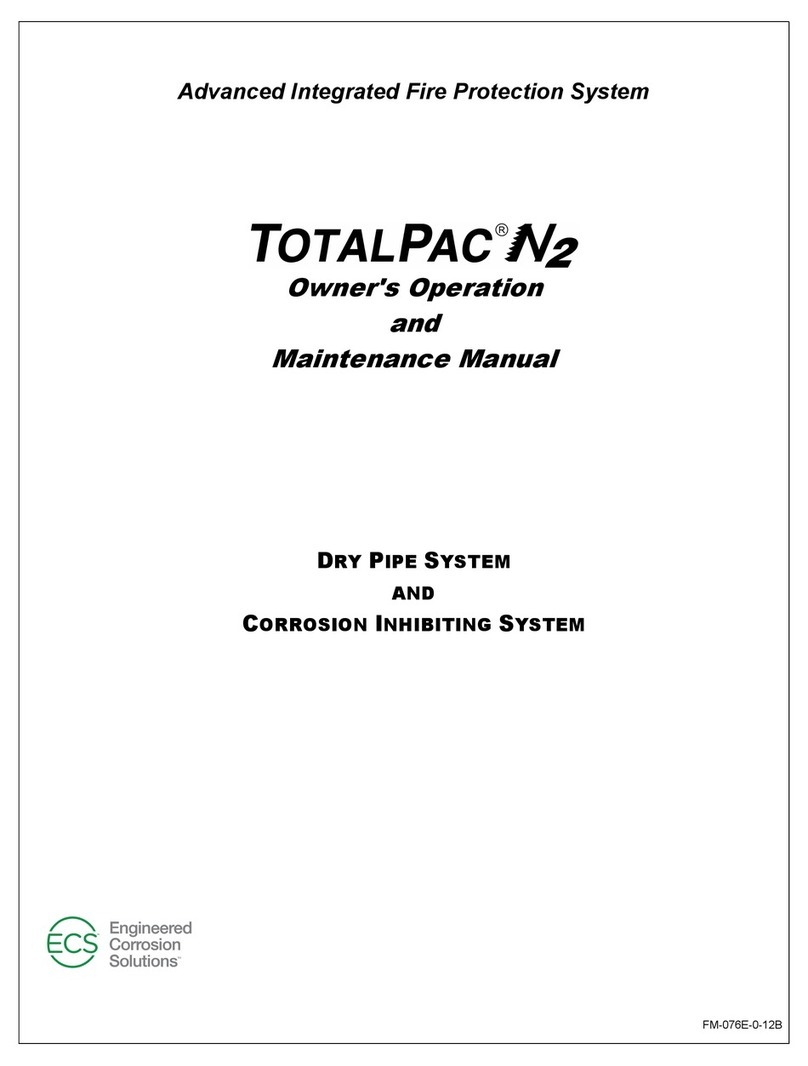
FireFlex
FireFlex TOTALPAC N2 Installation guide

FireFlex
FireFlex TOTALPAC2 User manual

FireFlex
FireFlex TOTALPAC X Installation guide
